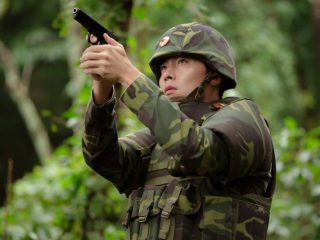
Fashion is a dynamic industry with new styles rapidly coming out at every trend cycle. Unfortunately, the pandemic has offset its productivity with travel bans and business closures. Due to the plunge in sales worldwide, many retailers have cancelled their orders from factories and suppliers. And with the demand for new designs given the new normal, fashion requires a huge labor force and reliable sources of material that fit into the corporation’s standards and manufacturing budget.
On the other hand, conversations on fast fashion have also raised concerns on whether the materials and labor used to produce clothes were sourced ethically. Although many corporations are taking steps towards sustainability, not all of them provide clothes at cheap prices. One practice that many environmentalists have supported is thrifting. However, there isn’t a guarantee that you can immediately find what you want in these stores. Since these pieces are preloved, finding a piece of clothing that fits you perfectly is a test of luck.
Fortunately, there’s this trend called “thrift flipping” which takes an article of clothing (usually thrifted or preloved) and modifies it to fit the desires of who wears it. It’s like altering clothes, but reimagining them and creating completely new pieces. Many people have tried it at home and posted tutorials online. We asked YouTube vlogger (and licensed nutritionist dietitian) Nastasja “Nash” Micaela Rapi who has been thrift flipping for six years now on how she got into the craft and for tips for those who want to try it.
Thrift flipping can help you save money
As someone who loves fashion, Nash recognized that shopping for the latest styles is pretty expensive if she relies on the common retail shops in the malls. It’s not exactly practical to keep on buying pieces for P800 to P2000 every time a new trend comes along. This is one of the things that inspired Nash to buy clothes from thrift stores.
“When I thrift, I make sure the pieces I buy are less than 100 pesos because a price little higher than 100 is already expensive for me. I love it when thrift shops make a sale of 10 pesos all items. Unfortunately, these pieces are the ones that they call napagpilian na which means it’s very seldom to see a very nice piece with a perfect fit, so that’s when I decided thrift flipping, turning a 10 peso item, from trashion to fashion,” says Nash.
Since Nash is into fashion trends, she draws her inspiration from most of the clothes she sees in the mall before she experiments on her thrifted finds. She says that finding pieces at the thrift store that are identical to those worn by the mannequins in the mall gives her a “fulfilling” feeling, but looking for similar prints or fabric types is the next best thing. These allow her to easily recreate the looks that she likes without major alterations.
Nash sometimes skips heading to the thrift store for new pieces and thrift flips some of her and her family’s old clothes so she has something new to wear. If you can’t get to a thrift store right now, you can always raid your closets for clothes that you haven’t worn in ages and turn them into something new.
Three tips for the new thrift flipper
When it comes to thrift flipping, you don’t need any special training to get started. Nash started doing this as a hobby for her to save money. She shared with us three tips for people new to the craft:
Be creative
When she started thrift flipping, Nash wasn’t always happy with the fit of her finished products. This encouraged her to practice more and train herself to make the right cuts and sizings. After all, it’s her clothes so she has full liberty to hide or remove whatever part she didn’t like.
“Don’t be discouraged if you don’t have a sewing machine at home, hand sew is still applicable, especially if the items only need downsizing and cropping. I started with hand sewing and now I’m using a hand me down sewing machine. I still don’t have professional equipment but I flaunt everything I create.”
Be patient
Like we previously said, thrifting is a test of luck. Nash admitted that she’s spent two hours in a small thrift store looking for good pieces and thinking of ways to recreate them. She advises to be patient because there are hidden treasures in thrift shops and “nothing beats the feeling of making a dress from something really not wearable.”
Find your own style
Nash raises an important question: “how can we unleash our creativity if we depend it on what’s in or not?” Despite admitting that she draws inspiration from existing styles, Nash expresses her own style and feels more confident with what she has thrift flipped herself.
“Once you find your true style, you will be more confident in wearing the items you flipped, even if it’s just P10! Price [should] never be an issue (even if it’s the cheapest), the finished product is what’s important. Wear your thrift flip items proudly! Who knows you might be the next designer in Paris Fashion week (wow!!!!).”
Art by Tricia Guevara
Follow Preen on Facebook, Instagram, Twitter, YouTube, and Viber
Related Stories:
Going green for 2020? Try these sustainable practices
The future of Philippine fashion: It’s a sustainable, diverse, and inclusive world for ‘Sinulid’ top 10
A fabric of Slim’s legacy: Sandy Higgins was a champion of Filipino fashion education
Saint Laurent says goodbye to Paris Fashion Week 2020

